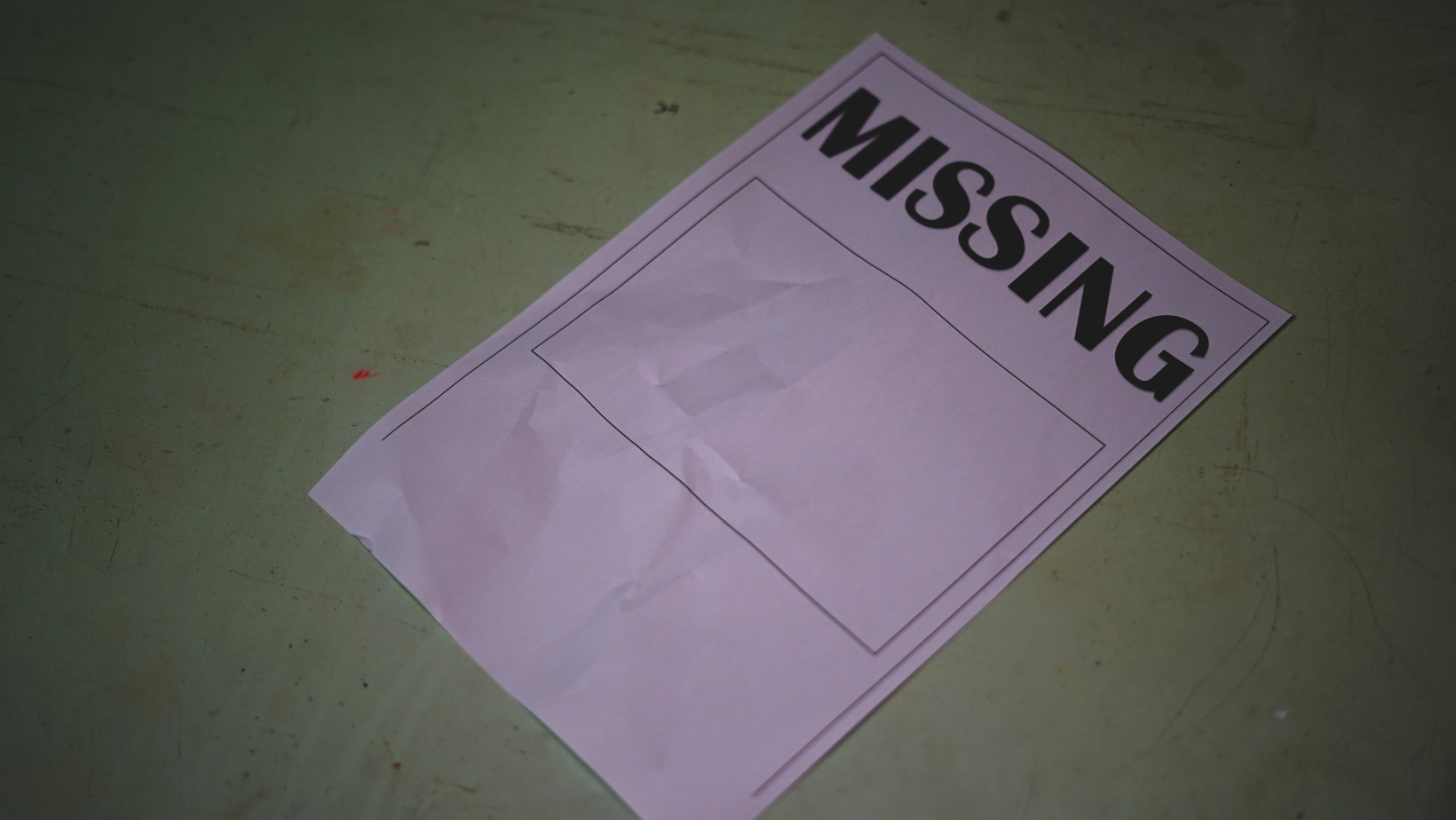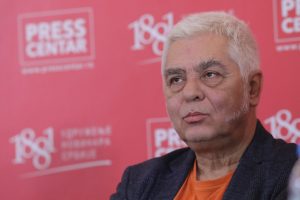Can we commemorate the victims of crimes of the past, even as we turn a blind eye to the crimes against journalists of the present? This is the fundamental question. The answer will determine our future. On that hot and sticky August morning, the 21st of the month, 1998, Radio Priština journalists Đuro Slavuj from Dvor on the Una and Ranko Perenić from Lipljan went to the Sveti Vrači monastery in Zočište, in western Kosovo, to report on the return of kidnapped monks. They have been missing ever since.
It was a time of war, and the news spread like an eerie foreboding among all the journalists in the field.
What was a terrible apprehension almost three decades ago, or precisely 27 years ago, is now an unproven fact.
As soon as Milivoje Mihajlović found out what happened, then the editor of Radio Priština and the head of the Media Center, he launched a search to find them.
At his request, Mike O’Connor of the New York Times joined the effort. The respected American journalist returned from a settlement near Orahovac with essential information. He had seen a car with an audio recorder in it. The car was the one used by the two missing journalists when they left for the field. The serial number of the audio recorder matched theirs.
Yet the investigations, if there actually were any, never found even that car. It was as if that bulky blue „Zastava 128“, the famous car of the non-existent Yugoslavia, had vanished into thin air.
Mihajlović called everyone for help, including Kati Marton, then president of the Committee to Protect Journalists (CPJ) and wife of influential US diplomat Richard Holbrooke.
“When we toured the field, we came into contact with KLA soldiers, and through them with their commanders. We always asked them about the missing Radio Priština crew, but we never got a satisfactory answer,“ said Shaun Byrnes, the former head of the American diplomatic observation mission in Kosovo (KDOM).
The struggle against impunity continues
After the end of the war, the responsibility of crime investigations was handed over to international missions. First, the mission of the United Nations (UNMIK), and then EULEX, the “Rule of Law Mission” of the European Union.
Neither in this, nor in 15 additional cases of murdered and missing journalists in Kosovo from 1998 to 2005 were the perpetrators found, or at the very least, was some information uncovered that could shed light on the fate of these kidnapped journalists, both Albanians and Serbs.
Only the case of one of the murdered journalists was prosecuted, and this happened within the framework of a wider, more voluminous case before the International Criminal Tribunal for the former Yugoslavia (ICTY).
International missions, states and governments, have completely failed on this issue. They did nothing to protect journalists, not enough to keep them safe, not nearly enough to reveal their destinies or punish the perpetrators. No officials seem to have cared.
The journalists’ struggle and appeals for truth and justice seem to have been swallowed inside the dark tunnel of political power that sets the rules and dictates the outcomes. Sound familiar?
The European Federation of Journalists (EFJ) adopted three motions demanding the investigation of these crimes, and due to the complexity of implementing international law on the ground, it demanded the establishment of an International Commission of Experts to investigate the murders of journalists and media workers. The motions, adopted at EFJ Annual meetings in Lisbon in 2018, in Zagreb in 2021 and in Priština in 2024, remain unheeded.
In 2021, on the day marking the international fight against impunity, the International Federation of Journalists (IFJ) sent a letter to Kosovo’s Prime Minister, Albin Kurti. They requested prompt investigations of these crimes against journalists and demanded accountability. There was no response.
Is it necessary to reveal that nothing was done?
„My Ranko is gone. He got dressed and went to work and I’ve been looking for him ever since. I would like this agony to stop, to know where he is, to light a candle.“ The cries uttered so many times by Snežana Perenić, wife of Ranko Perenić, echo in the abyss of grief of one family.
Demanding justice since 2012, the Journalists Association of Serbia has placed a plaque nine times near Orahovac where their colleagues had been abducted, between Zočište and Velika Hoċa. The plaque, in Serbian and Albanian, reads: „Our fellow journalists were abducted here on August 21, 1998. We are looking for them.“
The plaque was removed and destroyed eight times by persons unknown. It still stands today.
In that very place, Snežana Perenić holds her grandson Matija’s hand every year and repeats – “I’m looking for him”. Matija never met his grandfather. For him, going to that place is also a meeting with other journalists, colleagues who share with him precious stories of his grandfather Ranko.
Are memories the only thing we are keeping alive?
„It is true that so much time has passed that everyone could say: It is time to give up, because there is no hope. However, two innocent victims, two professionals, two men who have become a symbol of martyred journalists have disappeared, and seventeen of our colleagues who were murdered and kidnapped are facing the same fate. There is hope, because a person cannot disappear, and therefore the need for justice cannot disappear, and it will be like this as long as we exist and as long as this profession exists”, points out Živojin Rakočević, president of the Journalists’ Association of Serbia (UNS).
What happened then is still happening in the heart of Europe.
In today’s Serbia, journalists face mounting violence
In today’s Serbia, Aleksandar Vučić, who was minister of information in the notorious Milošević regime, is the president who rules the country with an authoritarian fist.
Today, his Serbian Progressive Party (SNS), his thugs and hooligans, the police, regime prosecutors and judiciary have raised the level of violence in Serbia against journalists and non-governmental media to such an extent that there is an omnipresent and foreboding fear that the worst is yet to come.
While Vučić brands ethical reporters as terrorists, foreign mercenaries, and anti-Serbs, he is the one conducting and instigating violence and terror.
Since the beginning of the year, journalists and media organisations have recorded more than 220 different attacks, including physical and serious death threats, escalating in the beginning of August.
The police no longer defend journalists but attack them. The other day, out of 10 attacks on journalists, 6 were by the police.
„Journalists and the media today are fighting for the basic postulates of the profession, but also for survival,“ Veran Matić, president of the Commission for Investigating Murders of Journalists in Serbia, points out and underlines:
„Violence against journalists is increasing every day. And in such a situation, we must continue to investigate what happened to the kidnapped colleagues. We must ask the competent institutions why there are no investigations and results. As long as we remind the public about the terrible fate of our colleagues, there is also the possibility that someone will start doing their job, to exercise their conscience and responsibility. Impunity is also unacceptable for the sake of the injured colleagues and their families.“
And not just in Europe.
The ‘journacide’ persists in Gaza
Sami Abu Salem, a respected journalist from Gaza and an IFJ safety trainer, answered my phone call knowing he could be killed anytime:
“Maybe while I’m talking to you right now, I could be killed. I do not know. I believe I’m not a target as a person, but as a journalist”.
He was tired, hungry.
Today as never before, we as journalists are faced with the unfolding tragedy in Gaza, a „journacide“ as described by the IFJ, with at least 226 journalists and media workers killed since 7 October 2023, dozens injured and others missing. All cards are on the table.
And because the sound of cries remains an echo reverberating off the wall of political inhumanity, the number of journalists killed in Gaza has doubled. A year ago, 124 journalists and media workers were killed.
As we scroll through scenes of death and blood on our screens, we are actually witnessing the murder of not only journalists, but the merciless slaughter of the profession. A war against journalism, perpetrated by governments that in the United Nations profess to protect freedom of media and safety of journalists, but in reality are ready to acquiesce to the opposite.
In order to save their lives, journalists in Gaza get up every day, hungry, thirsty, without the privilege to grieve for their friends and family members. We have failed as people if we do not do the bare minimum. We have to help stop the terror and do everything in our power to combat impunity for murders of journalists, wherever they may occur.
Make no mistake, „radio silence“ surrounding the case of the murders of a journalist has long ceased to be a chilling message. It is the sound of the respiration apparatus that keeps journalism on artificial “life support” as the prelude to the clinical death of our profession.
We must fight back. If we care about the integrity and importance of journalism as a profession, we cannot accept that our murdered colleagues disappear without justice. The cases of Slavuj and Perenić are among many. They must not be forgotten, not for the sake of their families and colleagues, and not for the sake of professional journalism. If impunity wins, we lose our integrity and we lose professional journalism.
So, what will we do?
This article has been written by investigative journalist Jelena L. Petković. She has been working for many years on combating impunity for crimes against journalists and has over many years conducted research into the killing and disappearance of journalists in Kosovo. She has conducted interviews with more than 200 interlocutors: relatives, colleagues, acquaintances and members of international missions, disclosing new information on the disappearances and killing.
Source: IFJ




